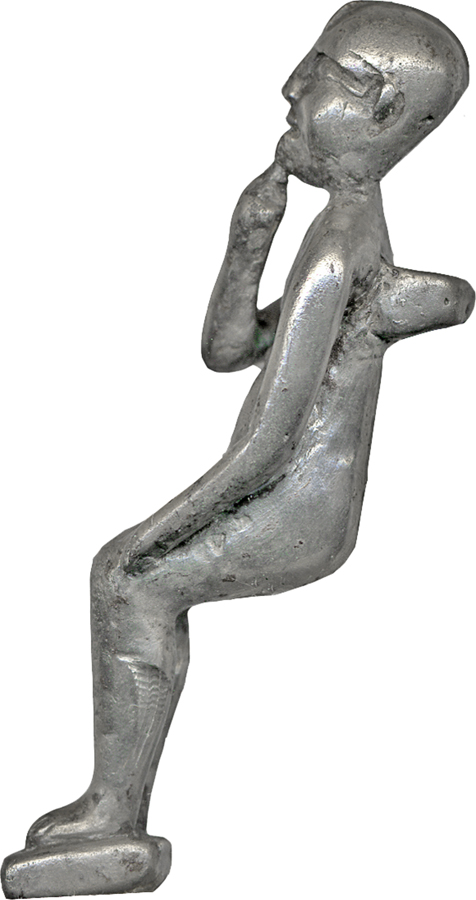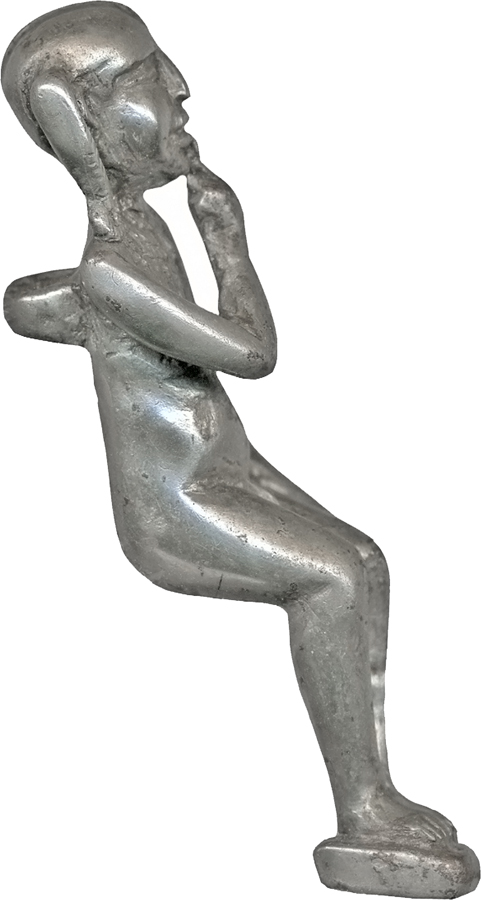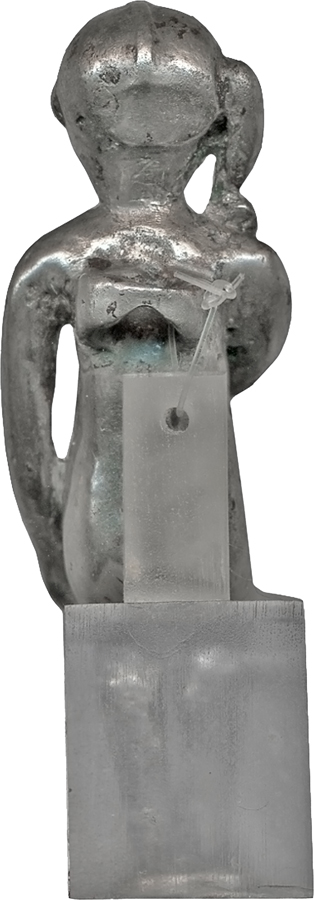Pendant, Horus the Child Seated
Pendants with representations of deities made of silver were precious in ancient Egypt. They had an amuletic function and were used by the elite. This pendant represents Harpokrates (Horus the Child) in a seated posture. The image follows the iconographical standard for this god- with the nude body, a uraeus (cobra serpent) on the forehead, a juvenile sidelock, and a collar around his neck. His feet rest on a rectangular base. Harpokrates was a very popular deity, especially in the first millennium BC, together with his powerful mother Isis.
Provenance
Provenance (from the French provenir, 'to come from/forth') is the chronology of the ownership, custody, or location of a historical object. Learn more about provenance at the Walters.
Abemayor, Cairo [date and mode of acquisition unknown]; Henry Walters, Baltimore, 1928, by purchase; Walters Art Museum, 1931, by bequest.
Exhibitions
| 2014-2015 | Die Entstehung der Welt. Ägyptens letzter Schöpfungsmythos (The Origin of the World. Egypt’s Last Creation Myth). Roemer- und Pelizaeus- Museum, Hildesheim; Kunsthalle Leoben, Leoben. |
| 2013-2014 | Egypt’s Mysterious Book of the Faiyum. The Walters Art Museum, Baltimore. |
| 2006-2007 | Daily Magic in Ancient Egypt. The Walters Art Museum, Baltimore. |
| 1979-1980 | Jewelry - Ancient to Modern. The Walters Art Gallery, Baltimore. |
Conservation
| Date | Description | Narrative |
|---|---|---|
| 5/5/1977 | Examination | examined for condition |
Geographies
Egypt (Place of Origin)
Measurements
H: 1 7/8 x W: 9/16 x D: 7/8 in. (4.7 x 1.5 x 2.2 cm); H on mount: 1 15/16 x W: 11/16 x D: 1 3/16 in. (4.9 x 1.7 x 3 cm)
Credit Line
Acquired by Henry Walters, 1928
Location in Museum
Not on view
Accession Number
In libraries, galleries, museums, and archives, an accession number is a unique identifier assigned to each object in the collection.
In libraries, galleries, museums, and archives, an accession number is a unique identifier assigned to each object in the collection.
57.1420








